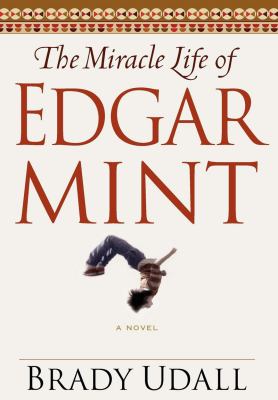
by Brady Udall
Library Journal
: "If I could tell you only one thing about my life it would be this: when I was seven years old the mailman ran over my head." With these words, Udall (Letting Loose the Hounds: Stories) begins the story of the life of Edgar Mint. It's amazing that Edgar made it even to seven. Born to an alcoholic Navaho woman and a cowboy wannabe from Connecticut who fled when he learned of the pregnancy, Edgar is left pretty much to his own devices. After the accident, Edgar's mother doesn't stick around long enough to learn that a young doctor, Barry Pinkley, has brought her son back to life. When Edgar finally wakes up in a hospital room with three broken-down men, he devotes his life to filling pages with words. After a stint in an Indian boarding school, where the staff turns a blind eye as the students torture one another, and a later attempt at normalcy with his Mormon foster family, Edgar decides that his purpose in life is to track down the mailman and offer his forgiveness. An engaging, well-told story that will appeal to fans of Western fiction and the quirky picaresque. Debbie Bogenschutz, Cincinnati State Technical & Community Coll. Copyright 2001 Cahners Business Information, Inc. Distributed by Syndetic Solutions Inc. Terms
Publishers Weekly
: Reminiscent of another debut Ken Kesey's One Flew over the Cuckoo's Nest this powerful first novel by short story writer Udall (Letting Loose the Hounds) is constructed around grotesque set pieces; black humor drives the plot. Set in the late '60s, Udall's story begins when seven-year-old Edgar Mint, the half-Apache, half-white narrator, is run over by the mailman's car, his head crushed. Abandoned by his grandmother and alcoholic mother after his remarkable recovery, the boy begins an odyssey through various institutions and homes, starting with St. Divine's hospital in Globe, Ariz., where he recuperates, through Willie Sherman's, a horrific school for Indian children, ending up placed with a dysfunctional Mormon family in Richland, Utah. The novel's long middle section, describing Edgar's brutalization at the Indian school by the other kids, captures the effect of what seems like endless bullying on a child's consciousness. Against this hostility, Edgar concocts a homemade magic, which consists mainly of typing on a clunky Hermes typewriter given to him by a fellow St. Divine's patient, Art Crozier, a middle-aged man who has lost his family in a car wreck. One of Udall's best touches is to make the doctor who saved Edgar, Barry Pinkley, into a mysterious and menacing figure, perpetually lurking on the sidelines, rather like Clare Quilty in Lolita. While Pinkley strives maniacally to be Edgar's guardian angel, the boy views him with ambivalent loathing. When Pinkley, disguised as a Mormon missionary, seduces Lana Madsen, the wife in the Mormon family that takes Edgar in, he sets off the final catastrophe in the boy's life. Udall's style is reminiscent of the '60s black humorists, but he doesn't share their easy cruelty or inveterate superciliousness, making this not only an accomplished novel, but a wise one. Copyright 2001 Cahners Business Information, Inc. Distributed by Syndetic Solutions Inc. Terms
School Library Journal
: Adult/High School-With Dickensian flair and mastery, Udall gives readers an underdog child protagonist, surrounds him with a cast of half-funny and half-tragic characters, and immerses them all in a plot full of staggering setbacks and occasional, hard-won moments of peace. When his head is crushed by a mail truck at age seven, Edgar is left for dead by his alcoholic, disinterested mother, who doesn't stick around to learn that he is later "brought back" by a shady doctor and whisked away to a hospital to recuperate. Some months and several delightfully cantankerous roommates later, Edgar regains all functions but the ability to write, which is more than solved when a fellow patient gets him a typewriter. Typing soothes the boy and becomes necessary therapy when he is released to an Indian school where other students punish him horrifically for being a "half-breed" (Apache and white). He is saved, literally and figuratively, by a pair of missionaries who recruit and place him with a Mormon family in a Utah suburb. Now that he feels relatively safe, the protagonist finds himself with a new purpose: to track down the devastated mailman who feels responsible for his death and let him know that he's alive and fine. Yet his sense of safety remains merely relative, as the disbarred doctor surfaces repeatedly in his life, full of menacing, disturbing love and determined to raise Edgar as his own son. This novel is a wonderful, wise debut, with a strong story told in language that teens will find easy to embrace.-Emily Lloyd, Fairfax County Public Library, VA Copyright 2001 Cahners Business Information, Inc. Distributed by Syndetic Solutions Inc. Terms
|

